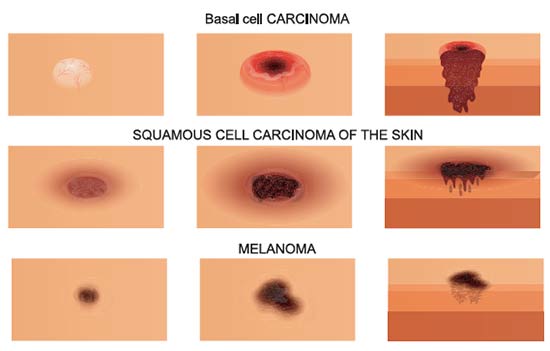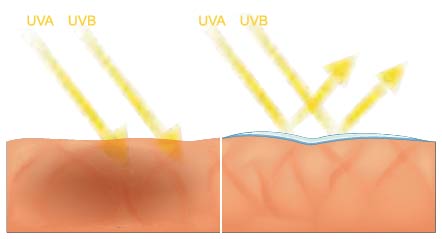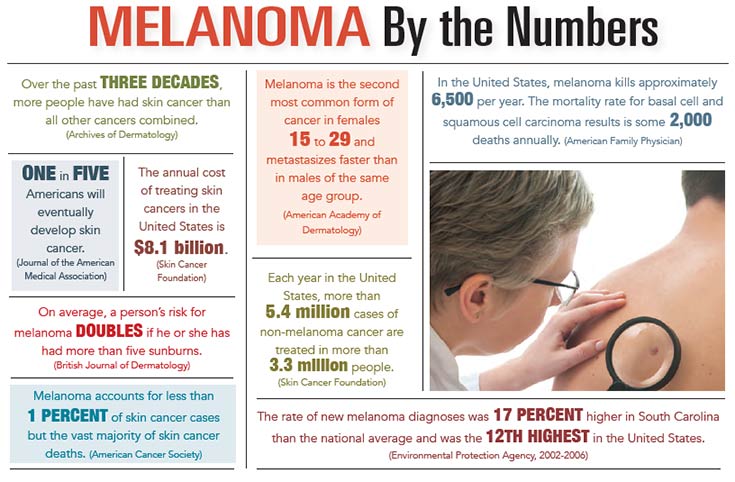Many patients visit a dermatologist for more or less innocuous, non-life-threatening conditions that include eczema, psoriasis, contact dermatitis and general skin irritation. But an increasing number see their doctor for more serious conditions ranging from actinic keratosis to basal cell carcinoma, squamous cell carcinoma and the deadliest skin cancer of them all, melanoma.
In fact, these skin cancers constitute the most common form of cancer, eclipsing all others and accounting for some 40 percent of cases globally. Anyone can develop a skin cancer, although its prevalence is notably higher among light-skinned individuals.
Although skin cancers can emerge without warning, one frequent precursor is actinic keratosis, precancerous lesions on the outer layer of the skin.
Like basal and squamous cell carcinomas, AKs are caused principally by exposure to sunlight and often begin appearing after age 40, although their incidence among younger people is higher in areas such as the South, where the climate is mild year-round. These precancers are normally easily treated with cryosurgery or “freezing” with liquid nitrogen.
“Beyond AK,” according to Dr. Todd E. Schlesinger, director of the Dermatology and Laser Center of Charleston, “basal cell carcinoma is the most common type we see and is the least dangerous. It occurs about 1.4 million times each year in this country. The next type of skin cancer is squamous cell carcinoma, which occurs between 4 and 6 million times a year and is more likely to metastasize.”
Dr. Lee Yarbrough, board-certified dermatologist at Charleston Dermatology, added, “These are non-melanoma skin cancers. They don’t really shorten your life span. But if they are not detected and treated early, they can become quite large and, unfortunately, some patients develop squamous cell cancer that can spread elsewhere in the body.”
Drs. Schlesinger and Yarbrough concur that the most common procedure for removal of both basal and squamous cell carcinomas is surgical excision with removal of the affected tissue to the surrounding areas of unaffected skin and biopsy of the removed tissue.
In some instances, if the cancer is larger, has returned to where it previously existed or is present on the face, neck, fingers or toes, the Mohs procedure is utilized. This microscopically controlled surgery removes tissue, which is examined while the patient waits in the office. This examination determines whether a clean margin has been achieved or whether the doctor must remove more affected tissue.

While basal and squamous cell carcinomas are never to be taken lightly, melanoma raises the stakes for the patient to a considerably higher level. Unlike basal and squamous cell, melanoma is not a carcinoma. It is a type of cancer that develops from the skin’s pigment-containing cells, the melanocytes.
“The incidence of melanoma continues to rise,” Dr. Yarbrough said. “Although it is unclear whether the growth in reported cases is due to changes in the ozone layer or people simply spending more time in the sun without adequate skin protection. We see more people taking charge of their own skin health care and seeking dermatological exams earlier and more frequently.”
Dr. Schlesinger agreed: “We run across a tremendous amount of melanoma here. We see the general trend as the number of cases going up every year. Patient education and outreach programs may play a role in patients seeking skin checks, resulting in more melanoma lesions being diagnosed at earlier stages in their development.”
One warning sign of melanoma dermatologists look for is moles that change in size, shape, color or elevation and often having ragged margins.
Once melanoma is diagnosed, the first course of action is excision to clear margins.
“In instances where the melanoma has gotten deeper than surgery will allow, we have to go to other treatments, which include chemotherapy, immunotherapy and vaccine therapy. Radiation doesn’t work well on melanoma,” Dr. Schlesinger said.
In Dr. Yarbrough’s view, “If a melanoma is skin deep, dermatologists are the doctors to treat it. That goes pretty much for all cancers in a specialty field. That is, when a cancer develops in the organ of your specialty, you treat it. But when it spreads to other organs, you get other specialists involved, and those specialists are in the oncological field.”

Dr. Yarbrough added, “Melanoma located only on the epidermis is a completely curable lesion. If the melanoma is deeper than one millimeter, referring the patient to an oncologist is warranted. And melanoma that is ulcerated, meaning looking like an open wound, is a very poor prognostic sign.”
How dangerous is melanoma? According to the Skin Cancer Foundation, an estimated 87,110 new cases of invasive melanoma will be diagnosed in the United States this year, and nearly 10,000 people will die from this cancer – one every hour around the clock.
The Melanoma Research Foundation suggests:
- Reduce and limit ultraviolet exposure both from natural sunlight and artificial sources.
- Identify and diagnose melanoma as early as possible.
Both recommendations involve active participation by individuals concerned about their own health. No one should spend time outdoors without adequate ultraviolet protection. At the pool or the beach, sunscreen should be reapplied every two hours or after going into the water – and tanning beds should be avoided completely.
Additionally, everyone should check their own skin regularly for any new skin lesions, especially odd-looking moles, and should see a dermatologist regularly. As Dr. Yarbrough put it, “A skin check at your dermatologist is a small investment in the grand scheme of your health.”
Most people don’t think of their skin as an organ, but, in fact, it is the largest organ in the body and often the last organ we think likely to endanger our general health, much less our very existence. Yet skin cancer, especially melanoma, is a threat that cannot be ignored. And dermatology is the first line of defense against serious illness and even death from skin cancer.








